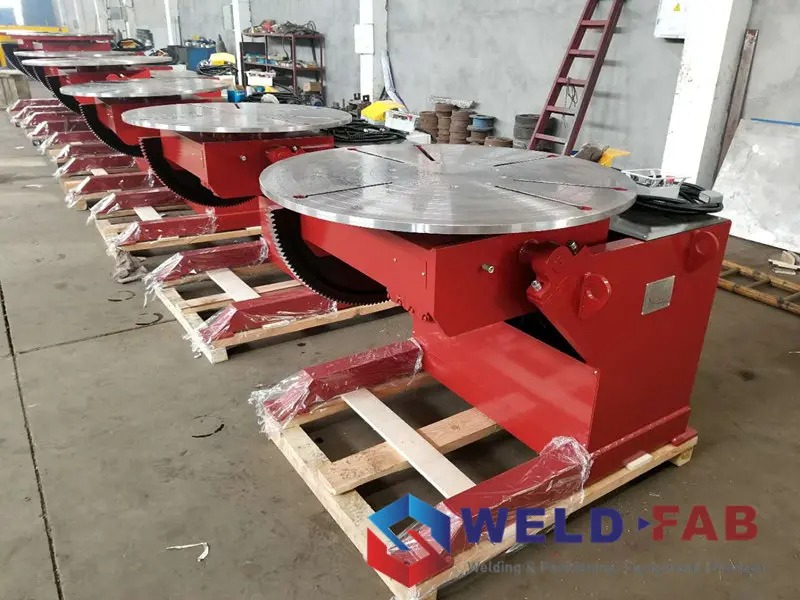
WELDING POSITIONER
WELD-FAB supply all kinds of welding positioners, includes head tail stock welding positioner, L-type welding positioner, hydraulic welding positioner, manual elevating welding positioner, fixed welding positioner and etc. To learn more about welding positioners, please contact with our sales team.
* Loading capacity from 100kgs to 50,000kgs
* Power supply customized from 110V to 600V
* Rotation speed and tilting angle can be customized
* Control mode can choose VFD or PLC
* Mechanical structure can be design for Elevating, Head Tail stock or Hydraulic type
Weld-Fab Welding Positioners
Head Tail stock welding positioner
L-Type Welding Positioner
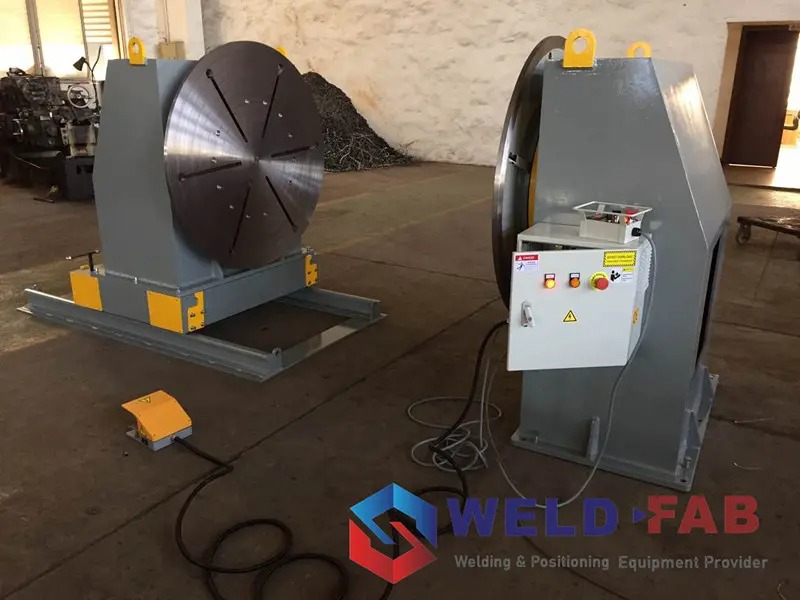
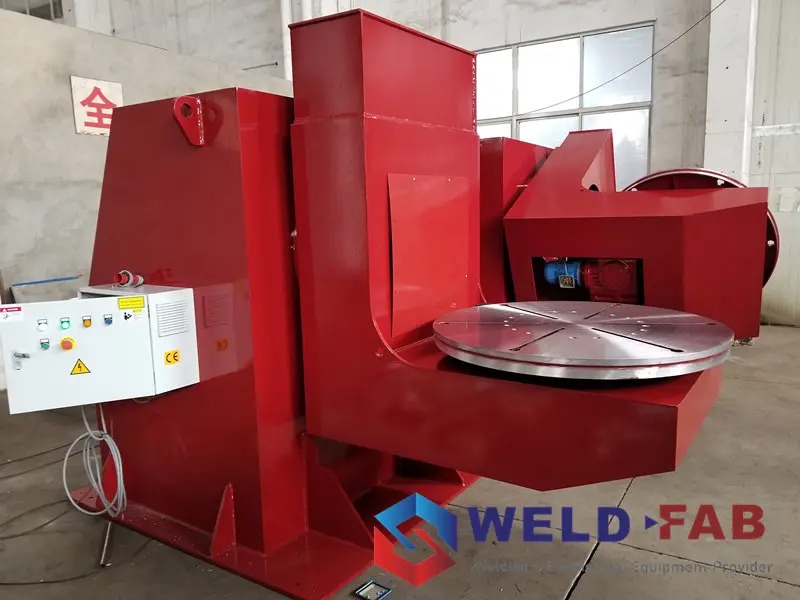
Hydraulic Positioner

Manual Welding Positioner
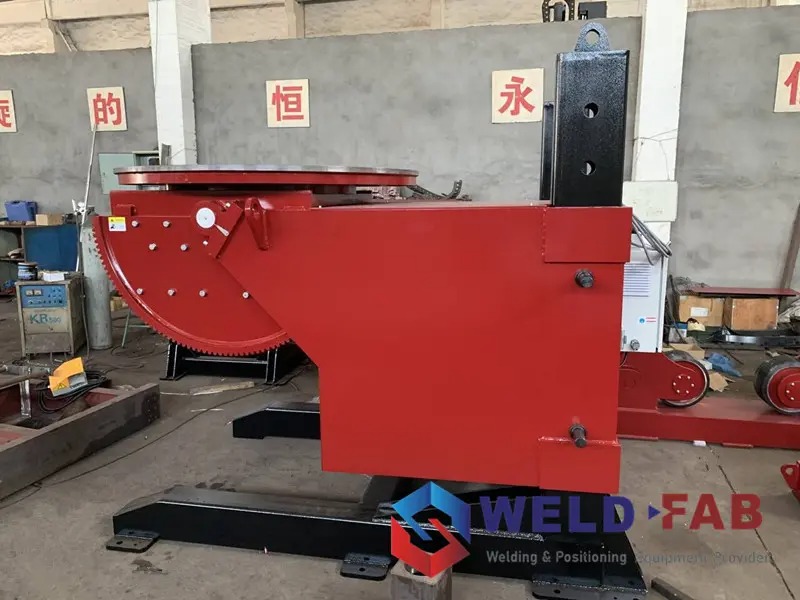
Weld-Fab Welding Positioner Video
Why Choose Weld-Fab Positioner?
√ Standard match with CSA & CUL and CE
√ Stable mechanical structure
√ Safety electrical design
√ Special customized loading capacity and dimension
√ Superior warranty and after service
Welding Positioner – The Comprehensive FAQ Guide
Are you sure you know what a welding positioner is? For this guide today, we will be walking you through everything you need to know about welding positioners. Rest assured that by the end of this guide, you’d know them like the back of your hand!
But wait, there’s more! Besides discussing welding positioners generally, we will also give you tips on how you can work with a good welding positioner manufacturer!
So, without further ado, let’s head right onto the guide!
What is a Welding Positioner?
A welding positioner is a machine or a device that can help “position” the workpiece.
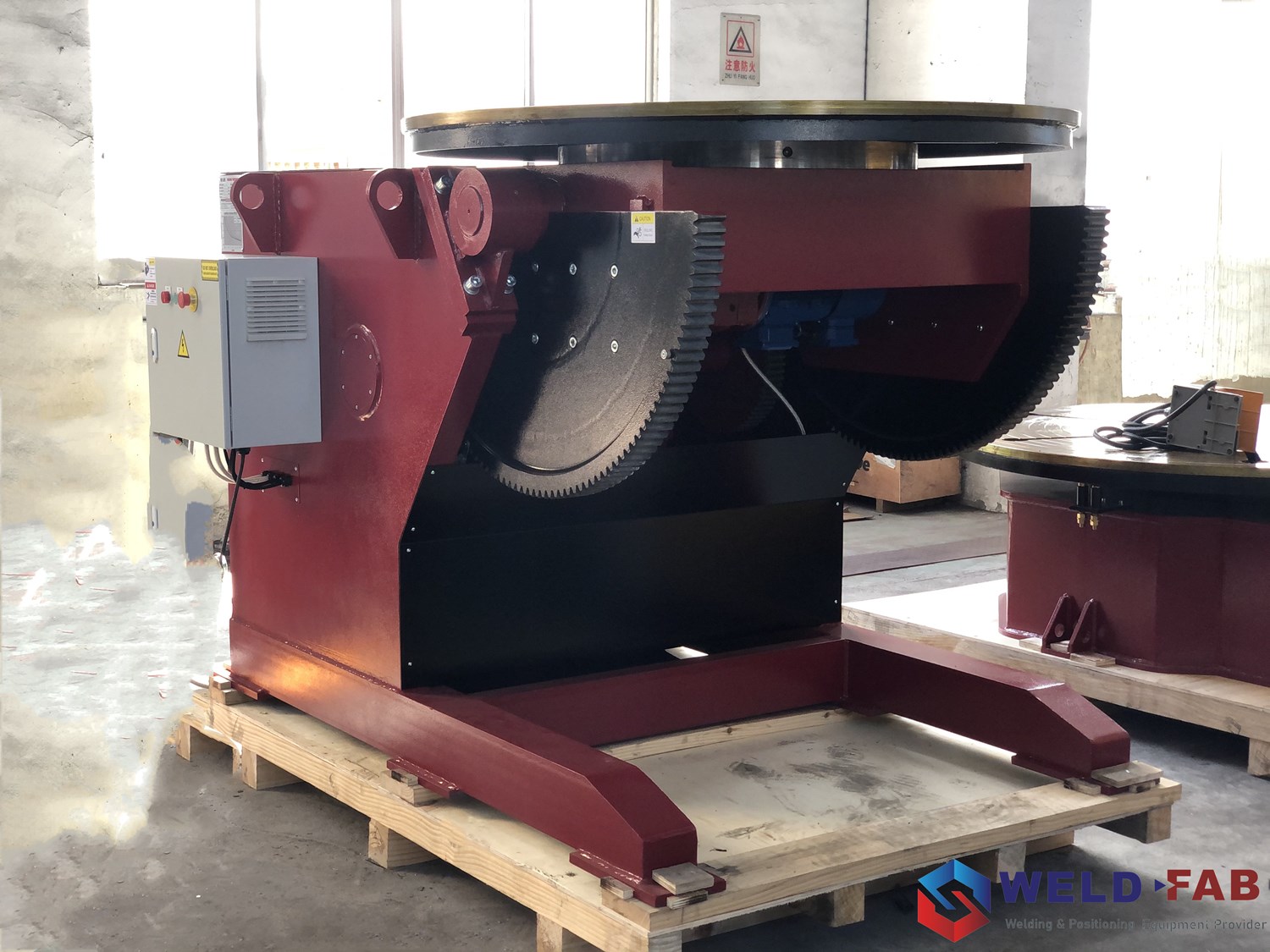
An example of what a welding positioner is
It’s a complementary auxiliary welding tool that can give aid to welders and welding robots. Most, if not all welding positioners are able to spin and rotate in a 360-degree axis, allowing welders and welding heads to stay in just one (1) position.
How Does a Welding Positioner Work?
Welding positioners work by moving or positioning the workpiece.
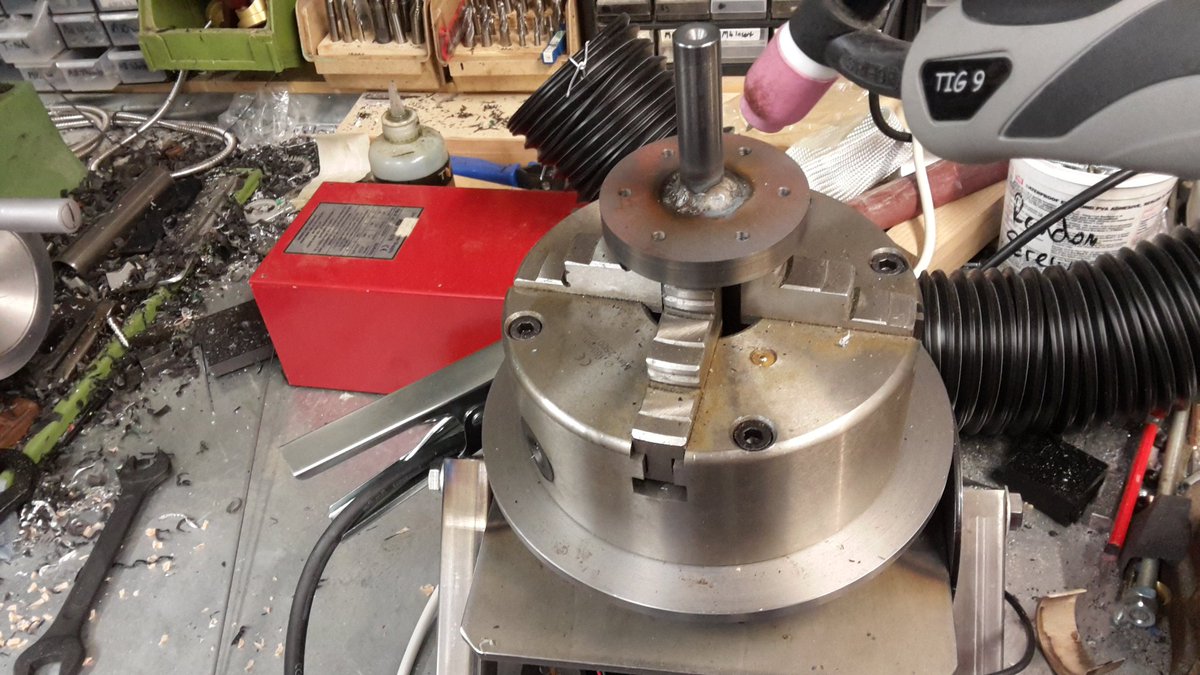
A clip from a video demonstrating how a welding positioner works
Contrary to what few people believe in, it’s not the welding head or the welding agent that it positions; it positions the workpiece instead.
The machine or the equipment that moves the welding head is called a welding manipulator. We’ll go with that topic a little further down the road.
Why Do You Need to Use a Welding Positioner?
Welding positioners aren’t really “required” to be used by welders.
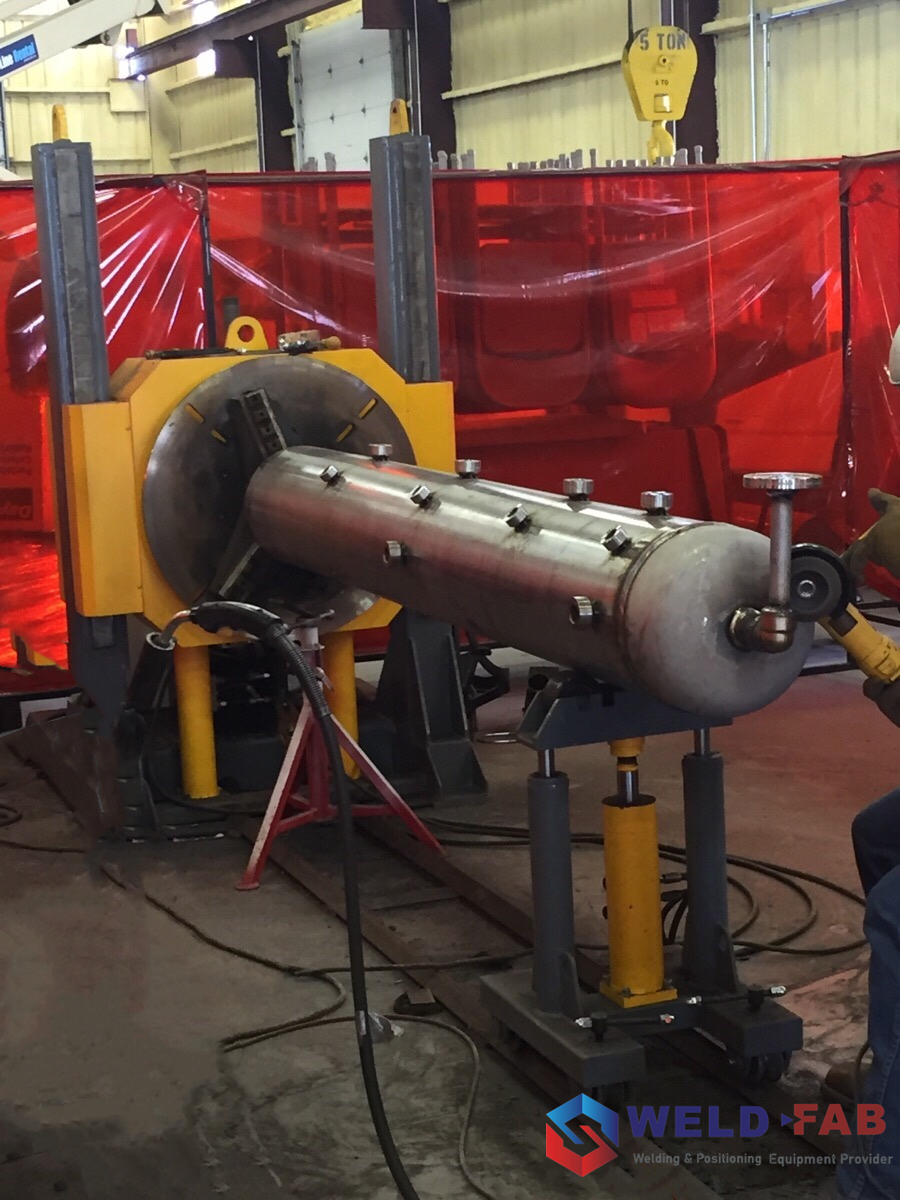
The welder can stay in one position and/or level while welding with a positioner
As a matter of fact, most welders want to use it because of the comfortability that it gives them.
Nevertheless, here are the benefits and advantages of using welding positioners.
Welding Positioners Promote Safety and Security
With a welding positioner, you wouldn’t have to worry about the safety and the security of welders!
Most of the time, these weld positioners would only need human intervention during the mounting and the dismounting of the workpiece.
Imagine if you had not welding positioner and your welder needs to work on a 20-ton vessel. Apart from the fact that it’s unsafe, it might take days – even weeks for your welder to finish that.
But, with a weld positioner, you can be sure that your welder will be safe and sound; and that you’ll be able to finish the project swiftly and more urgently. That brings us to our next advantage, which is…
Welding Positioners Increase Production Rate
Just like most machines and equipment, welding positioners can substantially increase the rate of production and completion of welding projects.
Therefore, you can be worry-free in case you’re unsure about when you can finish and accomplish a particular welding project.
Did you know that several welders reported that through the use of welding positioners, their rate of product completion increased by about 60%? That’s how effective weld positioners are!
Welding Positioners Can Improve the Quality of the Weld
When it comes to the quality of the weld, welding positioners are the best at it.
This is because of the fact that the interaction of human or workers is decreased – it’s going to be handled by a machine. Therefore, you can expect that the quality of the weld will be in its most precise and most accurate!
Comparing it if the weld is completed manually, there could be inappropriate errors in the weld results.
Welding Positioners Can Promote Efficiency
Last but most definitely not least is that a weld positioner can highly promote the effectiveness or the efficiency of the project.
Since it wouldn’t need human intervention, your workers can make themselves busy with other stuff like preparation of the next workpiece, inspection of the workpiece, etc.
These are just four (4) of the many benefits and advantages of using welding positioners. There are a lot more, and those will depend on how you plan on using them.
What Things Should You Consider in Using a Welding Positioner?
If you thought that welding positioners are “buy and easily use” machines, think again.
In order for your efficiency and effectivity to skyrocket, you need to consider a few things before you decide on using a welding positioner. These factors include:
- Positioning of the workpiece on the welding positioner
- Rotation flow or the movement of the positioner
- Mounting or the placing of the workpiece
- Weight of the workpiece you will weld on
- Volume or the amount of the workpieces you need to work on
- Budget or capital expenses you have planned
- And many more!
You need to consider these factors before deciding to purchase a welding positioner. This is because there are instances where welding positioners do more harm than good.
Is a Welding Positioner the Same as a Welding Manipulator?
Going back, we discussed that a welding positioner is a device that toggles and moves the workpiece.
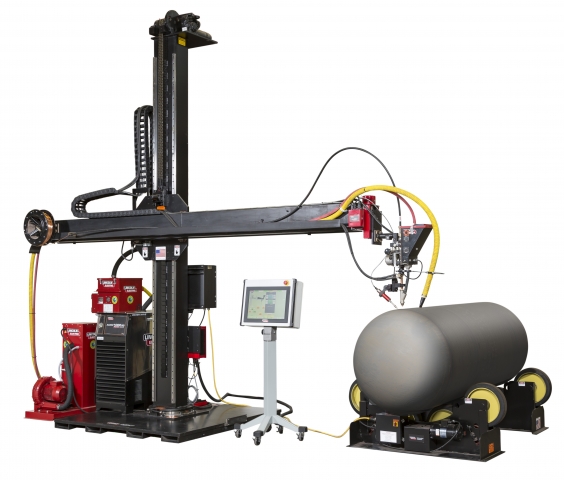
Quick example of what a welding manipulator is
On the opposite end of the rope, a welding manipulator is a device or an equipment that moves and manipulates the welding head in order to reach areas and points that are difficult for a welder to reach.
So, we can therefore conclude that a welding positioner is not the same as a weld manipulator. Yes, they’re both machines and devices you can use to ease up your welding processes. However, they’re not the same.
What Are Table Top Welding Positioners?
A tabletop welding positioner is part of the many different variations of positioners.
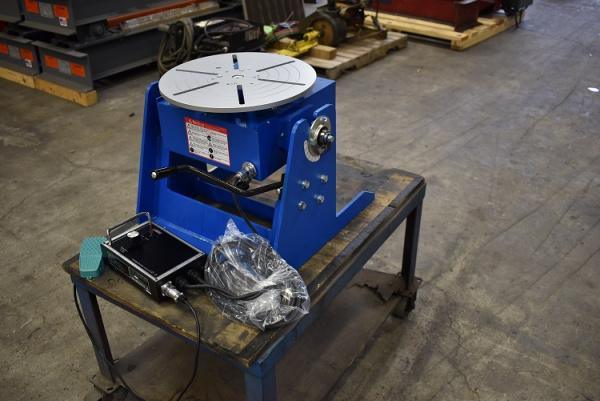
An image of a small welding positioner or a tabletop welding positioner
It’s called and dubbed as tabletop welding positioners because you’ll usually have to place them on top of a table.
Their small frame design makes them easy-to-transport, and therefore, you can use them for small welding procedures.
Are Used Welding Positioners Safe to Use?
Just like in any industry, purchasing an already used machine always carry risks.
The luck will actually be up to you. You’ll be the one responsible for the purchase so, you have to make sure that you check the welding positioner thoroughly.
Check everything from top to bottom and from left to right. Check out its inner workings – even the power cord and the power source that it has if it has one.
The safety and the legitimacy of a used welding positioner will be in your hands.
Can You Make a DIY Welding Positioner?
Yes, many home welders are trying to make their versions of welding positioners from scratch.
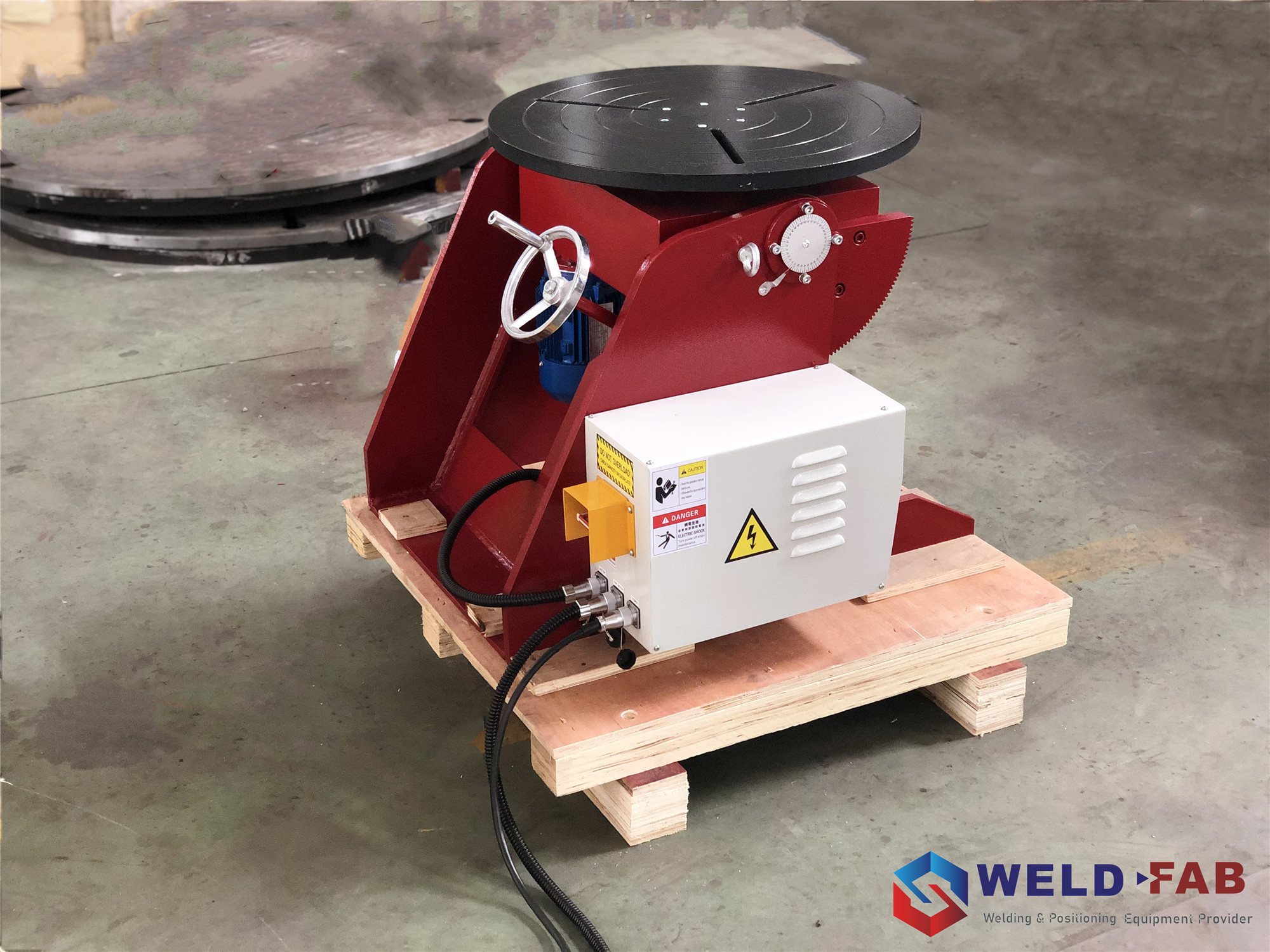
An example of a welding positioner kit assembled (DIY weld manipulator)
So long as you know how welding positioners work – and if you have a bit of knowledge about it, you’ll easily be able to create a DIY welding positioner.
In the event that you have little-to-no experience about it, don’t fret. You can purchase DIY welding positioner kits. These kits contain the entirety of the parts and components you need for your weld positioners.
Your only job would be to assemble them, and of course, to make sure that they’re going to function properly.
What is a Rotary Welding Positioner?
It is one of the many general classifications of a welding positioner.
You can consider it as one of the best and the handiest designs because of the fact that it can rotate in a full axis, which will allow you or your welder to stay in one place.
Is There a Manual Welding Positioner?
Before the automatic and the robotic welding positioners you now know of, there existed manual weld positioners.
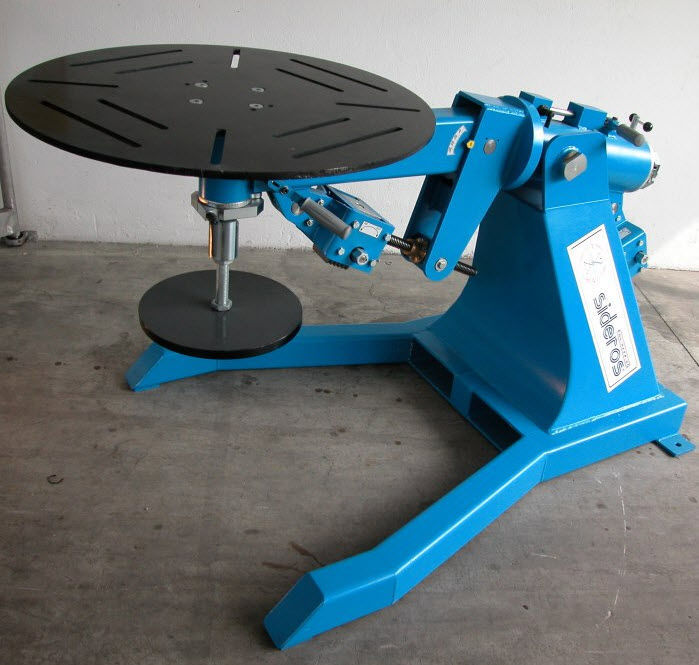
An example of what a manual welding positioner looks like
In fact, these manual welding positioners come in a variety of forms. But, the most common would be the weld positioner that had a pedal (either footswitch or hand pendant).
They function in the same way as how automatic welding positioners do. The only difference is that in order for you to move and to rotate the plate, you need to perform the command by pressing a foot pedal or a hand pendant.
What is a Jig in Welding?
In welding, you need to make sure that the workpiece or the project is stable, right? This is for you to be 100% of the precision and the accuracy of the weld.
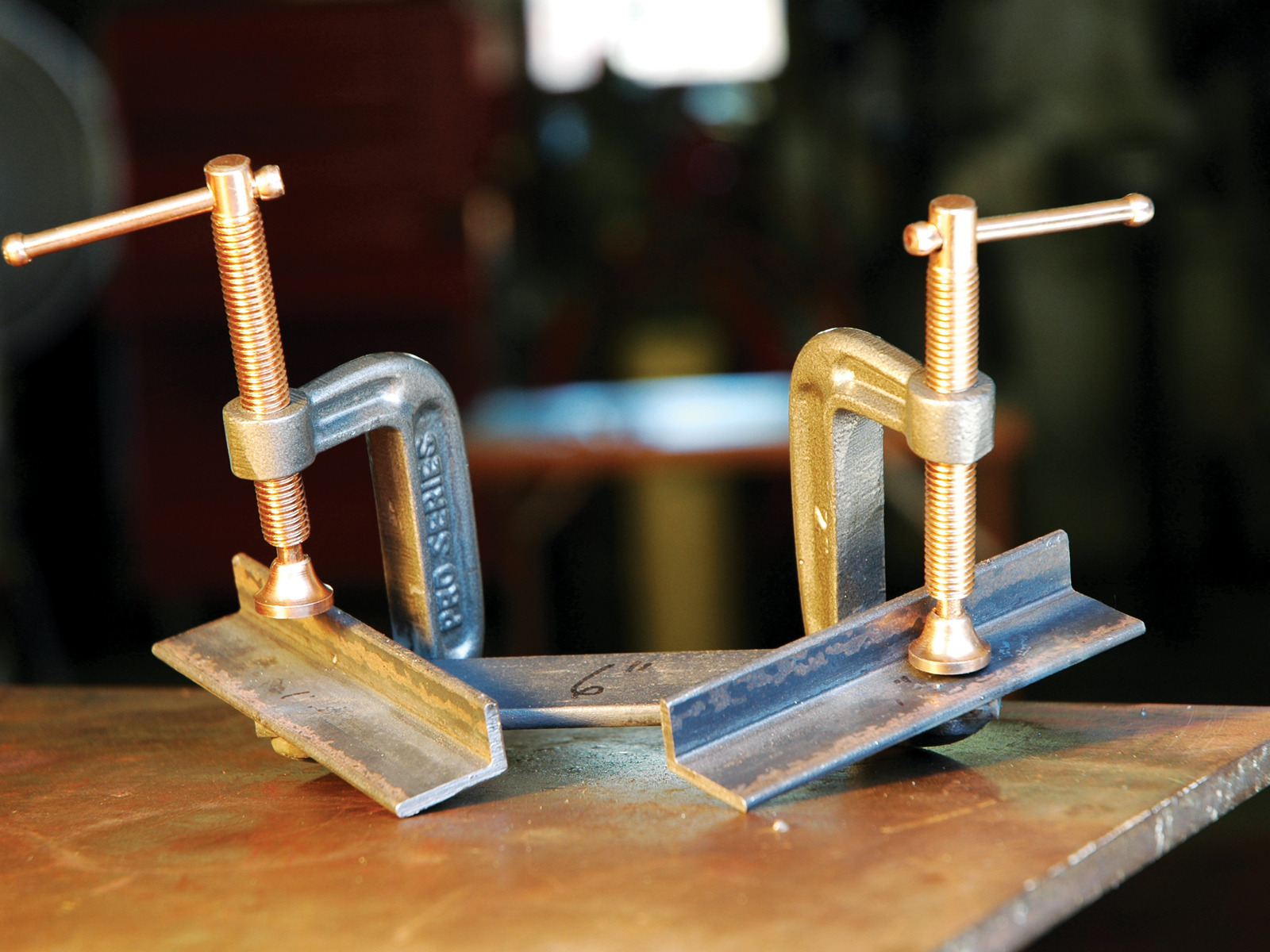
An image of what a welding “jig” looks like
That’s what a jig is for. A jig a brace, usually a large one that can hold and keep a workpiece stable. It’s so sturdy and tight that even heat, motion, force, and pressure won’t be successful in manipulating it.
You can think of it as a clutch or some type of material that can maintain the location or the motion of the project.
How Do You Choose a Welding Positioner?
Don’t be fooled by a lot of fake benefits and advantages you might see on manufacturers’ websites. Be educated and know what to look for!
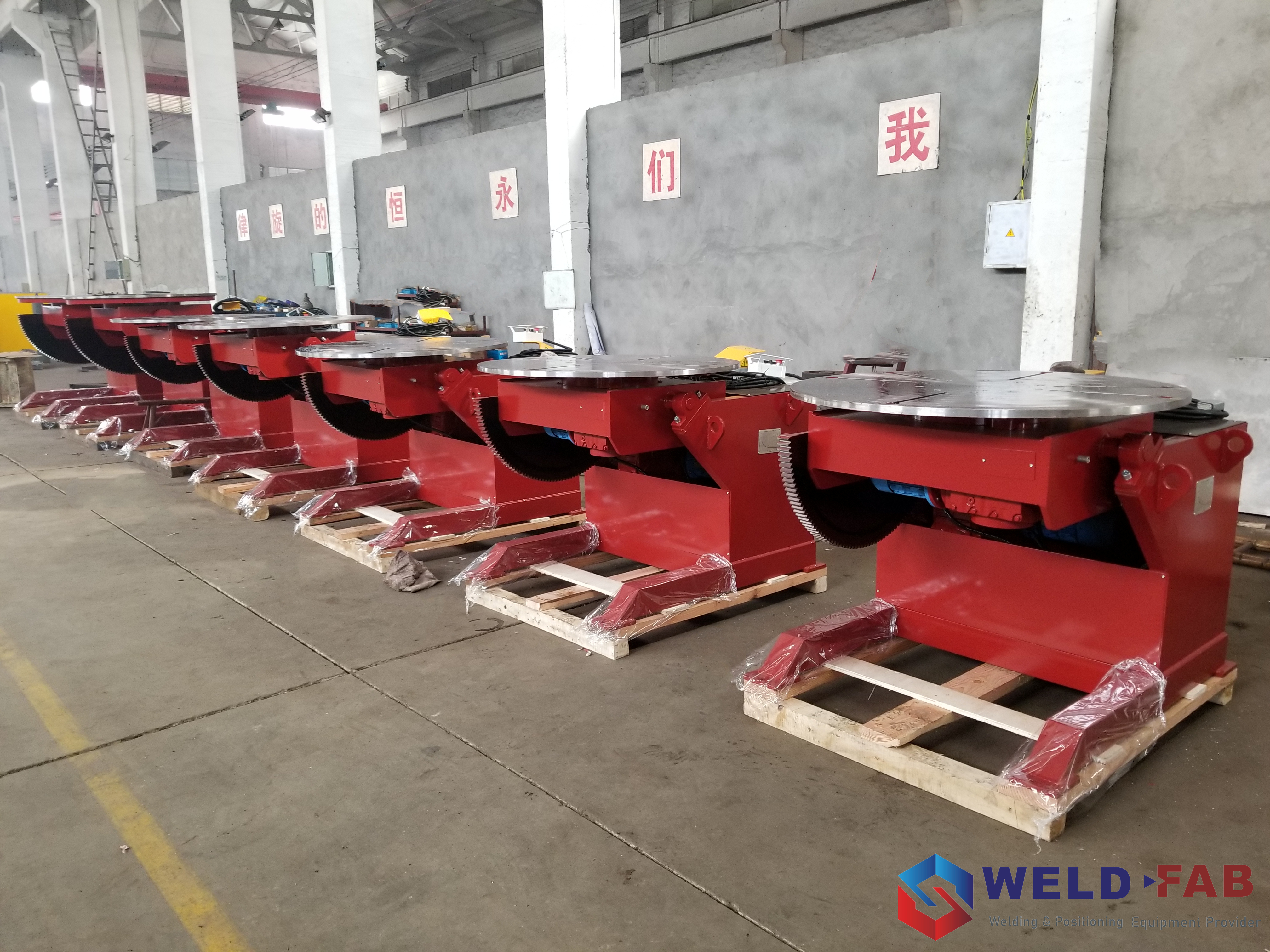
Different sizes and different types of welding positioners
We actually ran the extra mile and gathered a few of the best ways on how you can choose a welding positioner.
Welding positioners are supposed to make your welding projects easier – they’re not there to stress you out more.
Choose the Correct Welding Positioner For the Job
Many people do not know this, but welding positioners should work with the workpiece smoothly.
There are workpieces and welding positioners that do not go well together, therefore, you need to check and assess it, too.
Moreover, try to check out the weight capability of the positioner. If most of your materials are going to be 100 kilograms (kg) and more, then you need to make sure that the positioner will be capable of withstanding the weight of the workpiece.
Choose a Welding Positioner That’s Easy-to-Operate
Another option you might want to take is to check the operability and the functionality of the welding positioner.
Ask yourself, would it be something you can easily wrap your head around on? Or would it be something that can give you a hard time understanding it?
Choose a positioner that you’ll be comfortable to use. That way, you cane easily disseminate the information to your people.
Check the Features and Specifications
Last but probably the most important would be to check and assess the specs and the features of your welding positioners.
There are quite a few specifications – and too many to mention – but here are the most important specs to take note of.
Tilt Angle
The tilt angle is the ability or the capacity of the welding positioner to be tilted. If you have a large workpiece, you need to consider the inclination levels that the weld positioner is capable of doing.
Rotation Speed Capacity
Another thing you might want to tae note of is the rotation speed capacity of the welding positioner.
This is the degree of the rotation that the welding positioner is capable of performing at. Ask yourself if the capacity of speed is something that will be bearable to you? Would I be able to adjust the speed easily?
Weight Capacity
Of course, you need to make sure that the weight of the workpiece is a weight that the positioner will be capable of carrying or withstanding.
Disregarding the weight can break and damage both the inner and the outer workings of the welding positioner. So, it’s imperative to check if the weight capacity is within the project’s requirements.
Try to follow these tips and rest assured, the welding positioner you’re going to be purchasing will definitely be well within what your requirements are.
How Can a Welding Positioner Help a Welder?
Using a welding positioner can help welders in a lot of different ways.
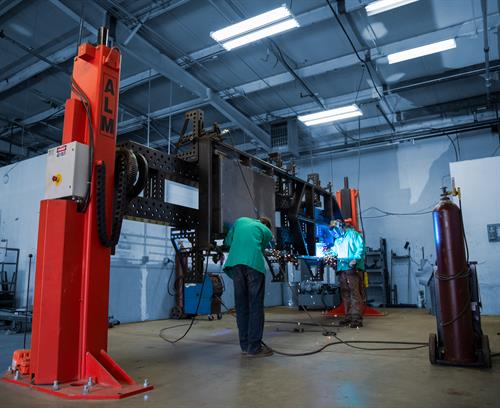
Large weld projects can be finished and accomplished easier and faster
But, the most common way is by making sure that the welder is safe and is free from any dangers and risks that the welding process imposes.
Besides that, here are few of the benefits and the advantages that welding positioners give to welders.
Less Welder Fatigue
With a welding positioner, the welder can stay welding at the same position without moving! In fact, they can stay within the same level or the same welding height, too!
What this basically means is that the welder can experience less stress and less fatigue. It’s part of the main contributions of welding positioners to welders. Due to that, the welders can expect…
Faster Completion Time
Many welders reported that whenever they use welding machines, they were able to complete the work twice as faster compared to when they were manually welding.
Thanks to the functionality of welding positioners, welders don’t need to worry about running out of schedule! They can finish and complete the projects faster!
And of course…
More Precise and Accurate Works
With less fatigue, less stress, and less movement – that would most certainly result to better, higher quality, as well as more precise and accurate projects.
Part of the reasons why welding positioners are priced the way they are, is because of the guarantee that the welding projects will be 100% precise and accurate.
As a matter of fact, it increases accuracy and precision by three-fold!
Thanks to welding positioners, welders will never have a difficult time completing projects!
What Are the Parts of a Welding Positioner?
The parts of welding positioners will actually depend on what type of welding positioner it is, as well as the manufacturer that produced it.
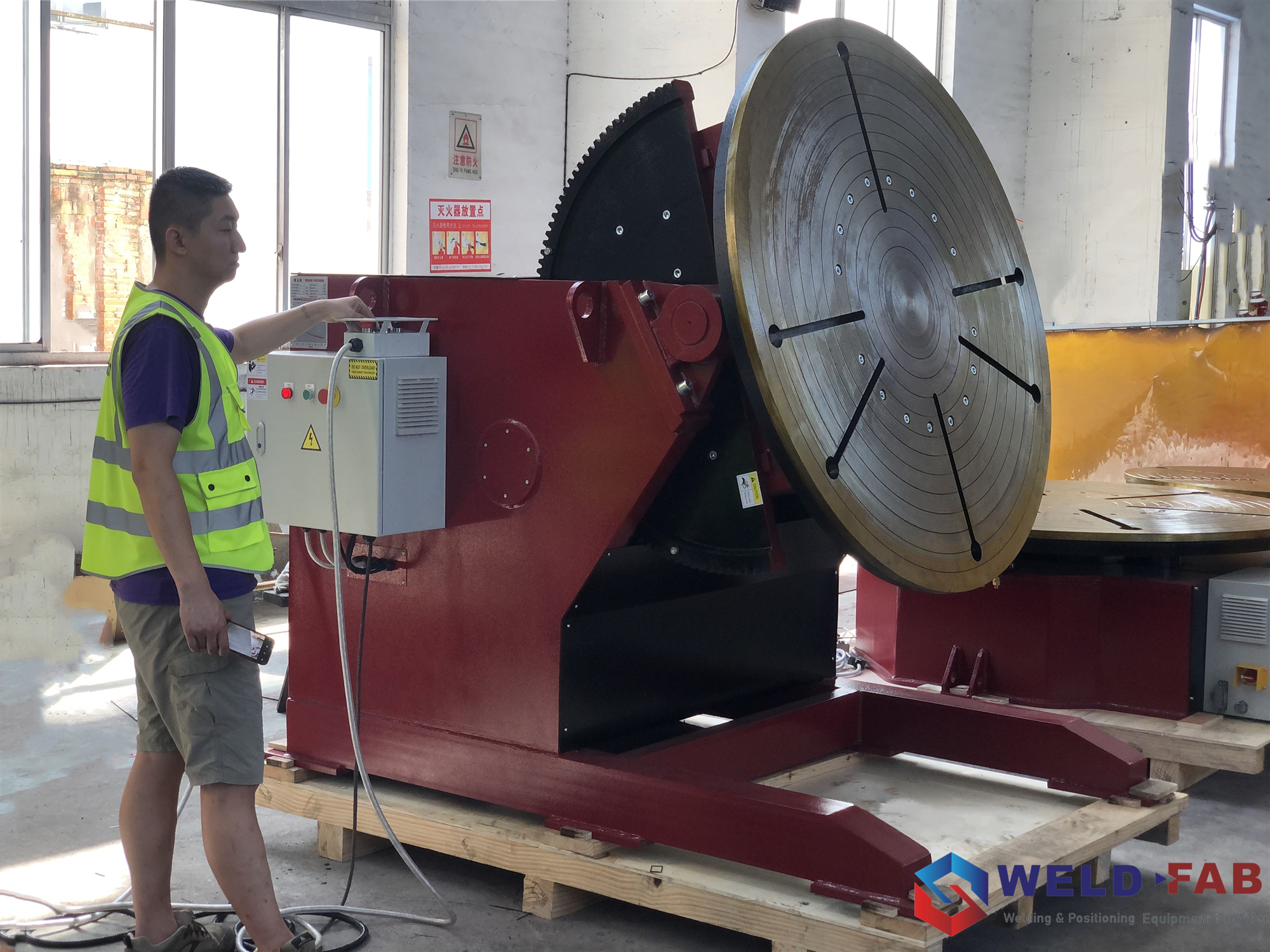
A sample image where you can clearly see the parts of a welding positioner
Nevertheless, we’ll give you the generic parts and components that make it work as it is.
We’ll start from the bottom part going up.
Freestanding or the Support
This is the area that supports the entirety of the welding positioner.
You can consider this as the strongest and the sturdiest area because it’s the one catching the entire weight of the weld positioner.
Electricity or Power System
This is the part that is responsible for the activation or for the turning on of the weld positioner.
Do note that some welding positioners, especially those that are conventional (manual) might not have a power system.
This is also that part that usually houses the motor (whether it’s DC or Servo motors).
Electromagnetic Brake System
A brake system is also present in a welding positioner because it’s the one that assists in the movement or the motion that welding positioners do.
Without it, the movement, spinning, tilting, and the rotation of the weld positioner will always be swift.
Tilt Protractor
This is the component that is responsible for the degree of tilting that the weld positioner is capable of doing.
Most welding positioners have their tilt protractors hidden, and therefore, you won’t be able to see it unless you look closely and thoroughly.
Face Plate or Table
At the top of the welding positioner is the welding plate or the table. It is simply the area where you would put and place the workpiece in order for it to be positioned and manipulated.
Most welding positioners would include chucks or jigs in the package, which can help you further with your welding projects.
These are the primary parts of welding positioners. As we mentioned, several manufacturers might have different parts – these are just the general ones that you’ll usually see.
How Do You Set Up a Welding Positioner?
Setting up a welding positioner might seem difficult, but it’s actually easy and simple.
As a matter of fact, most welding positioners would do you the favor of installing it to your manufacturing plant or your business area for free.
Otherwise, it’s easy to set up!
- Make sure that you have complete parts and components
- Test and calibrate if all the screws, nuts, and bolts are tightly sealed
- If it’s electricity-powered, check and see if the electricity box is sealed
- Plug the weld positioner in and adjust the tilt, the rotation speed, and the level of the face plate or the table
- Test it without a workpiece to see its rotational consistency
- Then, test it with a workpiece
That is how simple and easy it is! You’ve now set up your welding positioner!
Where Can You Purchase Good Quality Welding Positioners?
Working with a Chinese welding positioner manufacturer can get you high quality products. But, there are thousands of Chinese welding positioners that are good with their jobs – which one should you work with?
We here at Weld Fab have been considered by many as their go-to solution for all the welding requirements and equipment they need.
For many years, we’ve been streamlining all our processes and methods to serve you better! We started out in the industry as a company offer a few varieties of welding equipment.
Now, after years of dedicated work and research, we were able to form our Research & Development (R&D) team! This team will be the ones to cater to all the specifications and the customizations you want for your welding equipment!
Why is Weld Fab Your Best Choice For Welding Positioners?
In case you’re wondering why we’re the company that’s been deemed the best and the most reliable, it is thanks to the hardwork and the focus of all our employees – from our staff members and our factory workers, to our engineers and our development experts.
- We have a lineup of varying offers and products perfect for your welding needs
- We can offer you a tour of the manufacturing plant (includes a virtual tour)
- Weld Fab can deliver promising quality – from sourcing and drafting up to assembly
- We can give you an assurance with our after-sales services
- Weld Fab can provide free installation worldwide
Wherever you are in the world, you can definitely bank on us here at Weld Fab to help and assist you!
We have welding rotators, welding manipulators, welding turntables, and many more!
All of our welding positioners are carefully developed and engineered to cater to all your business needs!
What are you waiting for? Contact us now by dialing our number, chatting with us here through our website, or by buzzing us up in our Skype or WeChat accounts! Get world-class quality welding manipulators for a cheap price!
